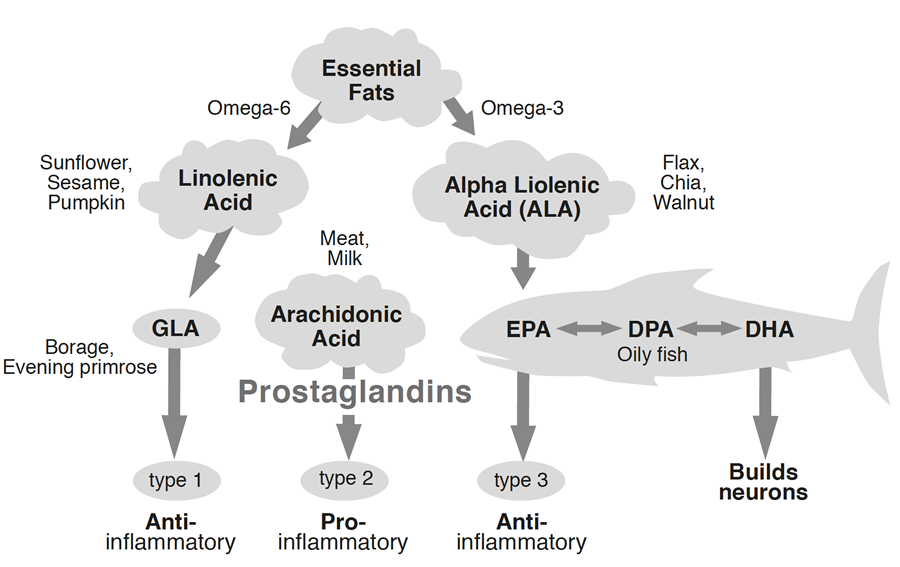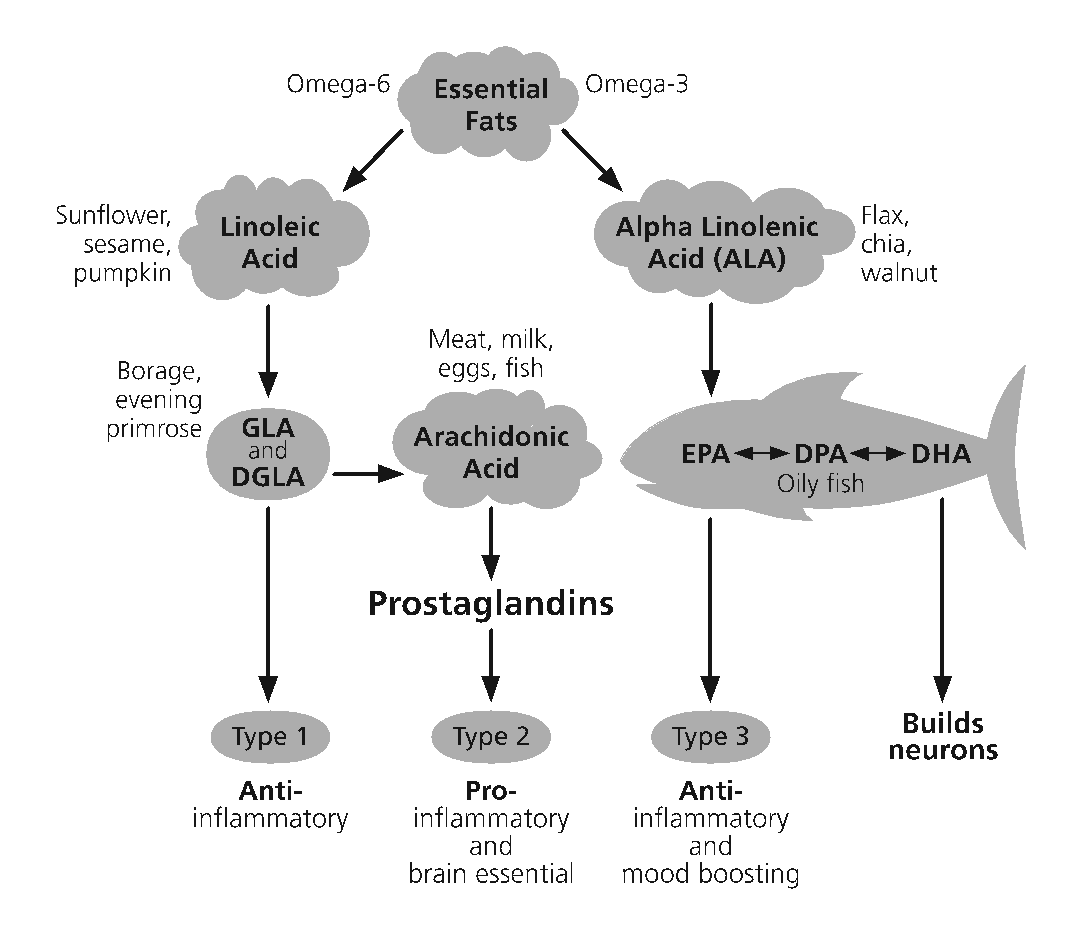Omega 3:6 – getting the balance right
By now, you’re well aware of how important omega-3 DHA is for your child’s developing brain. While we absolutely encourage eating omega-3-rich plant foods like chia seeds, walnuts, flaxseeds, and leafy greens, these sources provide omega-3 ALA, a form of omega-3 that the body must convert into EPA and then into DHA—the version the brain actually uses.
But here’s the catch: on average, only about 5% of ALA becomes EPA, and even less gets converted into DHA.
So, can this be improved? The good news is— yes, it can! There are two key ways that you can help your child’s body make the most of plant-based omega-3s:
1. Balance Omega-6 and Omega-3 Fats
Omega-6 fats compete with omega-3s for conversion in the body. When there’s too much omega-6 (from oils like sunflower, sesame, or corn oil), it can slow the body’s ability to make EPA and DHA. In the diagram below you’ll see that omega-6 fats, which mainly come from sources such as sunflower and sesame, should convert into their most powerful form, GLA, which is what you get in evening primrose oil or borage oil, often used in supplements. GLA is an anti-inflammatory and helps, for example, balance hormones.
2. Watch for Blood Sugar Imbalance
A high-sugar, high-carb diet—can lead to insulin resistance, which blocks the body’s ability to convert fats efficiently. This can interfere with both omega-6 and omega-3 pathways. You’ll learn more about how to manage this in the SUGAR BALANCE DOMAIN, which focuses on helping your child balance energy and avoid those blood sugar highs and crashes

© Patrick Holford & Piatkus
What You Need to Know:
✔ Your child’s body has the amazing ability to convert plant-based omega-3s (ALA) into brain-building DHA—but only if the right nutrients and fat balance are in place.
✔ The enzymes that do this conversion from ALA to DHA and linolenic acid (LA) to GLA, depend on certain nutrients such as B vitamins, zinc, and magnesium. Having enough of these is a good start!
✔ It is also useful to know that our ‘semi-aquatic’ ancestors and hunter gatherers that lived along the water’s edge, had more like a 1:1 ratio of omega-3 to 6. Today, the average child’s diet contains about six times more omega-6 than omega-3 mostly because of:
• Frequent use of sunflower oil for frying, the use of omega-6 oils from safflower, peanut, and soya in processed foods
• Meat from animals fed grain-heavy diets (like corn), which increases omega-6 in the final food
• A lot of packaged foods avoid essential fats completely because they’ll reduce the shelf-life of a food as these potent oils become rancid quite quickly. Good food goes off!
✔ To give you an idea here’s the ratio of omega-3 to 6 fats in common foods.
| Omega-3 | Omega-6 | |
|---|---|---|
| Cold-water fish | 100% | 0% |
| Chia | 70% | 22% |
| Flaxseed | 57% | 14% |
| Walnut | 52% | 10% |
| Canola (rapeseed) | 9% | 20% |
| Peanut | 0% | 32% |
| Sesame | 0% | 42% |
| Soya | 7% | 51% |
| Corn | 0% | 54% |
| Sunflower | 0% | 65% |
| Safflower | 0% | 75% |
| Olive oil | 0% | 6% |
How to Implement Change
Today’s Challenge: Become aware of all the food sources that contain omega-6, from the oils you fry in, to processed foods containing sunflower, safflower, peanut or soya or their oils. That’s not to say you and your child should never eat these foods – an awareness of how often you eat them is the first step to getting the Omega 3:6 balance right.
📌 Next email: Why Brain Fats Need Antioxidants – Plus Smart Cooking Tips
Wishing you and your child the best of health and happiness,
The COGNITION for Smart Kids & Teens Team
Further info

